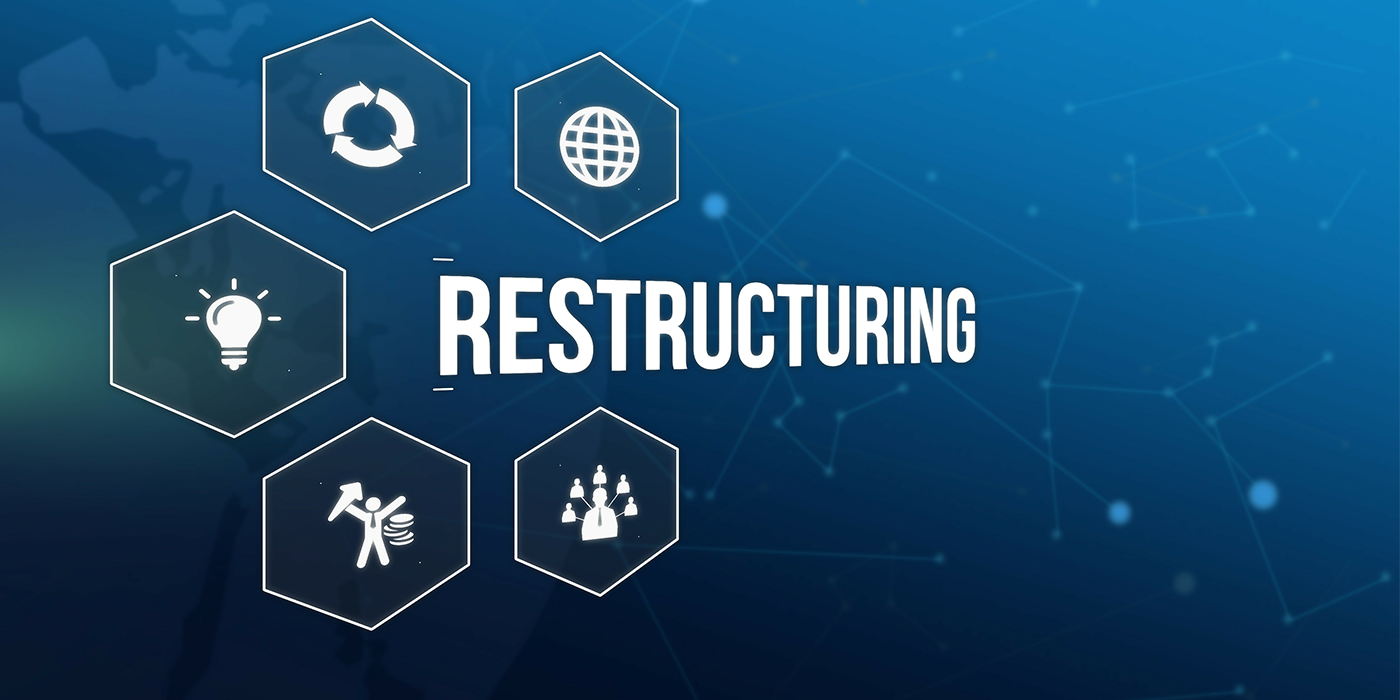Good First Impression
Phone Skills, Being Attentive and ‘Smiling’ Can Win Over Customers
I had a plumbing problem at my house and decided to repair the problem myself. I took the sink apart and proceeded to The Home Depot. I found the plumbing department and rummaged through the bins for about 15 minutes for the last item I needed, a piece of copper tubing. Unable to find it, I asked for help.
The sales associate, who had the personality of a corpse, said I was in the wrong aisle and directed me to a new one. I went there and spent another 10 minutes searching in vain. When I finally found another sales associate, he said what I needed was in the aisle where I started. Frustrated, I asked him if he’d please show me where.
"I’m going on my break," he replied. "The other guy can help you."
With that, I told him to take my basket and put it where the sun don’t shine and left the store.
We’ve all heard slogans like "The customer is No. 1" and "quality service." It all sounds good, but the reality is that customer service is on the decline.
A customer’s first impression of your facility begins with the first few seconds of contact – either in person or by phone. If my weekend warrior tale reminds you of a similar encounter you’ve had, I sympathize. If it makes you wonder how your customers feel when they call or stop in, listen up and take notes. Your competition is.
The First Thing They Hear
I recently took a class on telephone skills. The instructor began by playing a series of recordings she made by calling the various shops present at the class. You should’ve heard how they answered the phone. Three of them spoke so fast it sounded like gibberish. One of had the mechanic – who didn’t speak English ®“ answer the phone.
What percentage of your first-time customers call before coming into your shop? More than 80%, according to experts. So eight out of 10 potential customers get an impression of your facility by how you or your staff answers the phone. How can you be sure the impression you give is a good one? Keep these three points in mind:
®′ Be upbeat and smile
®′ Speak clearly and not too quickly
®′ Project yourself
Yes, Smile While Talking
People can hear you smile. Don’t believe me? Say good morning in two ways: first, without a smile, and then with a smile. You’ll notice there’s a different, more positive inflection when you smile. Smiling gives your voice energy and a cheery tone. And that conveys friendliness to the person on the other end of the line.
How can you ensure your staff is that phone friendly? Call your dealership and tape the person answering the phone. If you’re not impressed by the phone call, the following tips can help improve your staff’s phone presence:
1. Place a card next to the phone with the following greeting: "Thank you for calling ZZZ Tire & Auto! This is Toby Chess! How can I help you?" Reading a set greeting will help with pace and clarity. Most of us read more slowly and deliberately then when we talk off the top of our heads.
2. Place a mirror near the phone to remind your staff to smile.
3. Make it easy to get to the phone so they don’t bang into something.
4. Don’t eat when answering the phone.
5. Always answer the phone within three rings.
6. Before placing a caller on hold, ask if the person minds holding – and wait for a response. Then make sure you return to that caller quickly.
7. Have some on-hold music or information about your business for people to listen to while on hold.
8. Always thank the customer for calling.
Listen, Listen, Listen
OK, you’ve greeted the caller correctly, but now what do you do? In his book Telephone Courtesy, Lloyd Finch, a call center expert and author, says there are three types of comments you’ll hear from customers:
®′ A question
®′ A complaint
®′ A statement or explanation
Most people fail in responding to these comments because they fail to listen. Unfortunately, selective hearing – or hearing only what you want to hear ®“ is at the root of more than just customer service problems. By listening closely and carefully to what the customer is saying, however, you can come up with an appropriate response.
If you’re not giving the customer your full attention, it’s often difficult to distinguish between a question, a complaint or a statement. For example, if a customer calls to complain about a delivery time and you interpret it as a question because you’re not listening closely enough, your response may be completely different than what’s expected. The result is an irate customer. Take the time to listen to what your customers are really saying and let them say everything on their minds before you respond to them point by point.
I recently had a customer who left her car at our shop for repairs. The work would take five days. I made the necessary arrangements for a rental vehicle and started on the repairs.
On the fourth working day, I called to inform her that a part was back-ordered and that it was going to take two more days. All hell broke lose. She went on and on, but I let her finish before speaking. When she calmed down, I asked why she was so upset.
It turned out that she was given a pick-up truck as a rental. She was responsible for picking up her three grandchildren after school, but could only take two at a time because of the size of the truck cab. I immediately called the rental company and had them switch her to a full-size car. That was all she wanted and she was happy camper.
Roll Out the Red Carpet
If you get the chance to leave a great first impression over the phone, you need to back it up when the customer visits your shop. Likewise, your staff needs to present walk-in customers with an equally good first impression. Here’s how:
1. When a customer comes into the office, greet them with a smile and make eye contact.
2. If you’re busy, acknowledge a customer’s presence and let them know you’ll be with them soon.
3. When you greet customers, stand up and shake their hand (both sexes).
4. Remember their name.
5. If a customer is standing around, say "Good Morning" or "Good Afternoon," and ask him if someone is helping them. Make them feel important but not intimidated.
Think of your customers as your invited guests. In the mornings, I always offer customers a cup of coffee. If they say yes, I ask if they take cream or sugar and then get the coffee for them – just as I would for a guest in my house. In the afternoon, I offer a soft drink. Not every customer appreciates this kind of gesture, but the ones who do will remember it and it usually gives them more confidence in you and your business.
Customer Savvy
Making a good first impression means you have a better chance of making a lasting impression with your quality tires and service. This is why it’s imperative that you make sure your customer IS No. 1. And since these ideas on how to improve customer service will cost you little to implement, you can definitely squeeze them into your budget.
If you’re still not convinced of the importance of making the customer No. 1, consider this: After I left The Home Depot, disappointed and disgruntled, I went to my local hardware store. They not only had everything I needed, they also gave me plenty of helpful advice.
Guess where I’ll go the next time I tackle a home improvement project? TR
Toby Chess, AAM, is the Los Angeles I-CAR chairman, an I-CAR instructor and a certified ASE Master Technician. He is a regular contributor to Babcox publications.
Good First Impression
Phone Skills, Being Attentive and ‘Smiling’ Can Win Over Customers
I had a plumbing problem at my house and decided to repair the problem myself. I took the sink apart and proceeded to The Home Depot. I found the plumbing department and rummaged through the bins for about 15 minutes for the last item I needed, a piece of copper tubing. Unable to find it, I asked for help.
The sales associate, who had the personality of a corpse, said I was in the wrong aisle and directed me to a new one. I went there and spent another 10 minutes searching in vain. When I finally found another sales associate, he said what I needed was in the aisle where I started. Frustrated, I asked him if he’d please show me where.
"I’m going on my break," he replied. "The other guy can help you."
With that, I told him to take my basket and put it where the sun don’t shine and left the store.
We’ve all heard slogans like "The customer is No. 1" and "quality service." It all sounds good, but the reality is that customer service is on the decline.
A customer’s first impression of your facility begins with the first few seconds of contact – either in person or by phone. If my weekend warrior tale reminds you of a similar encounter you’ve had, I sympathize. If it makes you wonder how your customers feel when they call or stop in, listen up and take notes. Your competition is.
The First Thing They Hear
I recently took a class on telephone skills. The instructor began by playing a series of recordings she made by calling the various shops present at the class. You should’ve heard how they answered the phone. Three of them spoke so fast it sounded like gibberish. One of had the mechanic – who didn’t speak English ®“ answer the phone.
What percentage of your first-time customers call before coming into your shop? More than 80%, according to experts. So eight out of 10 potential customers get an impression of your facility by how you or your staff answers the phone. How can you be sure the impression you give is a good one? Keep these three points in mind:
®′ Be upbeat and smile
®′ Speak clearly and not too quickly
®′ Project yourself
Yes, Smile While Talking
People can hear you smile. Don’t believe me? Say good morning in two ways: first, without a smile, and then with a smile. You’ll notice there’s a different, more positive inflection when you smile. Smiling gives your voice energy and a cheery tone. And that conveys friendliness to the person on the other end of the line.
How can you ensure your staff is that phone friendly? Call your dealership and tape the person answering the phone. If you’re not impressed by the phone call, the following tips can help improve your staff’s phone presence:
1. Place a card next to the phone with the following greeting: "Thank you for calling ZZZ Tire & Auto! This is Toby Chess! How can I help you?" Reading a set greeting will help with pace and clarity. Most of us read more slowly and deliberately then when we talk off the top of our heads.
2. Place a mirror near the phone to remind your staff to smile.
3. Make it easy to get to the phone so they don’t bang into something.
4. Don’t eat when answering the phone.
5. Always answer the phone within three rings.
6. Before placing a caller on hold, ask if the person minds holding – and wait for a response. Then make sure you return to that caller quickly.
7. Have some on-hold music or information about your business for people to listen to while on hold.
8. Always thank the customer for calling.
Listen, Listen, Listen
OK, you’ve greeted the caller correctly, but now what do you do? In his book Telephone Courtesy, Lloyd Finch, a call center expert and author, says there are three types of comments you’ll hear from customers:
®′ A question
®′ A complaint
®′ A statement or explanation
Most people fail in responding to these comments because they fail to listen. Unfortunately, selective hearing – or hearing only what you want to hear ®“ is at the root of more than just customer service problems. By listening closely and carefully to what the customer is saying, however, you can come up with an appropriate response.
If you’re not giving the customer your full attention, it’s often difficult to distinguish between a question, a complaint or a statement. For example, if a customer calls to complain about a delivery time and you interpret it as a question because you’re not listening closely enough, your response may be completely different than what’s expected. The result is an irate customer. Take the time to listen to what your customers are really saying and let them say everything on their minds before you respond to them point by point.
I recently had a customer who left her car at our shop for repairs. The work would take five days. I made the necessary arrangements for a rental vehicle and started on the repairs.
On the fourth working day, I called to inform her that a part was back-ordered and that it was going to take two more days. All hell broke lose. She went on and on, but I let her finish before speaking. When she calmed down, I asked why she was so upset.
It turned out that she was given a pick-up truck as a rental. She was responsible for picking up her three grandchildren after school, but could only take two at a time because of the size of the truck cab. I immediately called the rental company and had them switch her to a full-size car. That was all she wanted and she was happy camper.
Roll Out the Red Carpet
If you get the chance to leave a great first impression over the phone, you need to back it up when the customer visits your shop. Likewise, your staff needs to present walk-in customers with an equally good first impression. Here’s how:
1. When a customer comes into the office, greet them with a smile and make eye contact.
2. If you’re busy, acknowledge a customer’s presence and let them know you’ll be with them soon.
3. When you greet customers, stand up and shake their hand (both sexes).
4. Remember their name.
5. If a customer is standing around, say "Good Morning" or "Good Afternoon," and ask him if someone is helping them. Make them feel important but not intimidated.
Think of your customers as your invited guests. In the mornings, I always offer customers a cup of coffee. If they say yes, I ask if they take cream or sugar and then get the coffee for them – just as I would for a guest in my house. In the afternoon, I offer a soft drink. Not every customer appreciates this kind of gesture, but the ones who do will remember it and it usually gives them more confidence in you and your business.
Customer Savvy
Making a good first impression means you have a better chance of making a lasting impression with your quality tires and service. This is why it’s imperative that you make sure your customer IS No. 1. And since these ideas on how to improve customer service will cost you little to implement, you can definitely squeeze them into your budget.
If you’re still not convinced of the importance of making the customer No. 1, consider this: After I left The Home Depot, disappointed and disgruntled, I went to my local hardware store. They not only had everything I needed, they also gave me plenty of helpful advice.
Guess where I’ll go the next time I tackle a home improvement project? TR
Toby Chess, AAM, is the Los Angeles I-CAR chairman, an I-CAR instructor and a certified ASE Master Technician. He is a regular contributor to Babcox publications.













